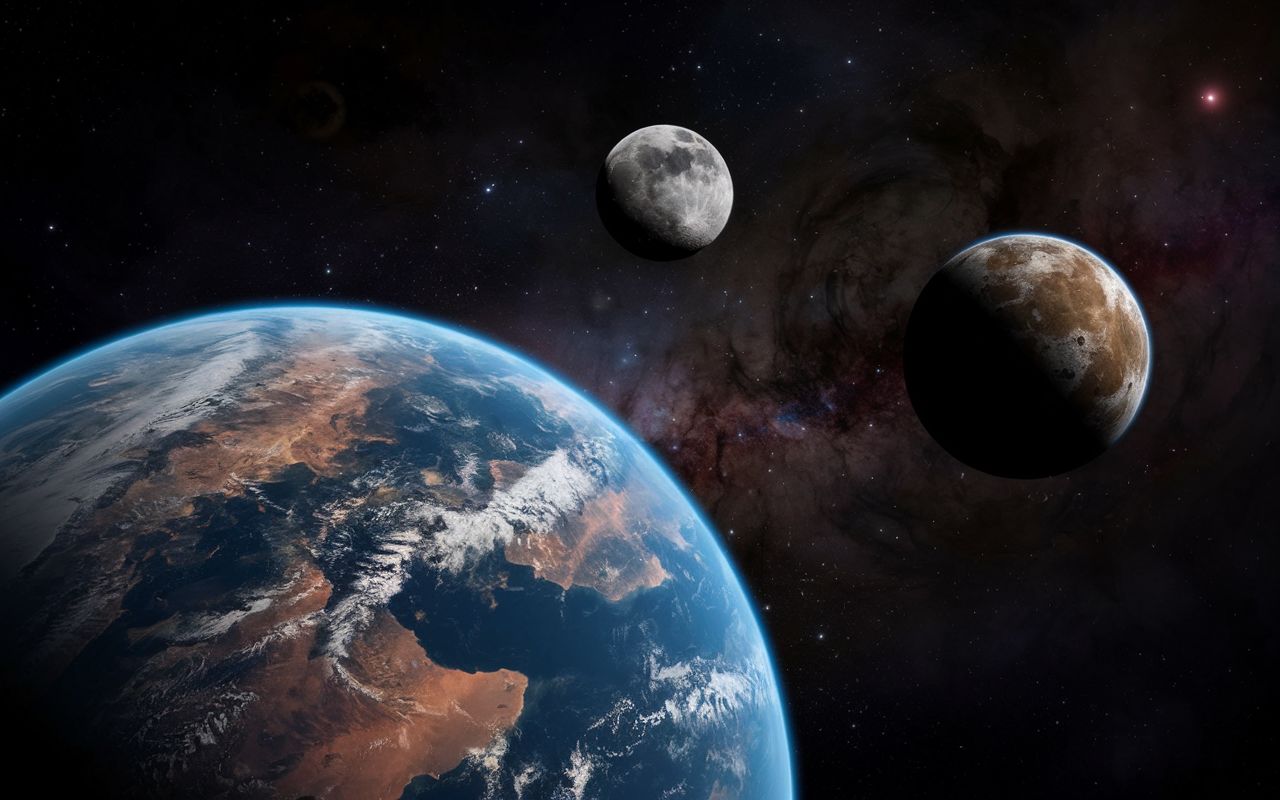What if Earth "stole" the Moon from another planet?
Follow us on Google News (click on ☆)
Two scientists from Penn State University propose an intriguing new theory. They suggest a capture from a binary system (binary capture) rather than a collision to explain the Moon's current orbit.

The prevailing hypothesis from scientific conferences in 1984 holds that the Moon formed following a giant impact. However, doubts remain because the Moon does not follow an equatorial orbit, as the collision model would suggest.
Darren Williams and Michael Zugger, building on this observation, argue that the Moon could have originated from a binary system. This system, passing near the young Earth, would have been separated by Earth's gravity, leaving behind a captured satellite: our Moon.
This theory is inspired by a similar phenomenon observed elsewhere in the Solar System. Triton, Neptune's largest satellite, is thought to have been captured from the Kuiper Belt. Its highly inclined and retrograde orbit reinforces this hypothesis.
The Moon, according to this capture model, would have initially followed an elliptical orbit. Over time, tidal forces would have altered this orbit, making it more circular. This would explain why the Moon is now gravitationally locked with the Earth.
The tidal effect, which today moves the Moon away by 1.18 inches (3 centimeters) annually, would have initially contracted its orbit. Over millennia, the Moon stabilized while gradually distancing itself from our planet.

The new research by Darren Williams and Michael Zugger suggests that the Moon might have originated from a binary system during its passage near Earth.
Credit: Penn State Behrend / Penn State. Creative Commons
Today, the Moon is at a distance where it experiences the competing gravitational influences of both the Sun and the Earth. This could affect its future orbit, opening up avenues for further research.
The binary capture hypothesis does not completely replace the giant impact theory, but it offers an interesting and still largely unexplored alternative. According to Williams, this could lead to unexpected discoveries in the years to come.
What is binary capture?
Binary capture is a theoretical process that could explain the formation of certain natural satellites, like the Moon. This phenomenon occurs when a binary system, composed of two objects orbiting each other, passes close to a planet. The planet's gravity can then break the bond between these two objects and capture one, incorporating it into its orbit.
This theory is used to explain cases like Triton, a moon of Neptune, which orbits in a retrograde fashion, meaning opposite to the planet's rotation. Scientists believe Triton could have been captured from the Kuiper Belt, where many binary systems are present.
In terms of the Moon's origin, the binary capture theory posits that Earth captured an object that was part of a binary system passing nearby.
What is the tidal effect?
The tidal effect is a gravitational interaction between two celestial bodies, such as Earth and the Moon. This effect manifests as deformations of the bodies and forces that influence their orbital movements. On Earth, this causes regular variations in ocean levels, with high and low tides.
Tidal forces also impact the orbits of celestial objects. In the case of the Moon, these forces are gradually slowing Earth's rotation and moving the Moon away from Earth by about 1.18 inches (3 centimeters) per year.
This effect also plays a major role in long-term orbital stabilization, turning elliptical trajectories into circular ones, as was the case with the binary capture hypothesis for the Moon and Earth.